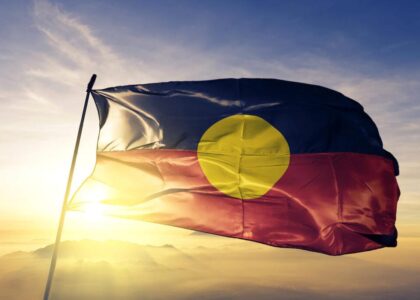Spotlight On The Victorian Aboriginal Procurement Target

Six years down the track, we take a look at progress towards the Victorian Aboriginal Procurement Target and consider how to enhance First Nations participation.
Driving First Nations participation in government procurement remains a high priority for Australian governments. It may not reach mainstream headlines as per the federal government’s proposed Voice to parliament or Treaty in Victoria, but it forms part of ongoing commitments to improving health and wellbeing, justice and safety, culture and country, and economic opportunities for Aboriginal people.
In addition to the federal Indigenous Procurement Policy, most state and territory governments have in place targets and commitments for procuring from First Nations businesses. The Victorian Aboriginal Procurement Target is one of these – however, there’s some work to be done to achieve the government’s goals.
Victorian Aboriginal Procurement Target – six years on
The Victorian Aboriginal Procurement Target has been in place since 2017, when it was announced as part of the Tharamba Bugheen: Victorian Aboriginal Business Strategy 2017-21. The original 2017 target stipulated that 1% of all Victorian government procurement was to be from Victorian Aboriginal businesses by 2019-20.
To help meet the Victorian Aboriginal Procurement Target, Victoria’s social procurement framework (launched 2018) specified creating opportunities for Victorian Aboriginal people as one of its seven key objectives.
However, the 1% target has proven a challenge for government to meet for a number of understandable reasons. Six years after being set, the Victorian Aboriginal Procurement Target remains at 1% for the foreseeable future.
Measuring progress
Despite the challenge of meeting the 1% target, the Victorian Aboriginal Affairs annual reports show the government is steadily increasing its procurement towards Victorian Aboriginal businesses. (See the Victorian Aboriginal Affairs Framework (VAAF) data dashboard.)
Note the percentage of Victorian Aboriginal businesses is calculated by comparing the number of Aboriginal businesses against the total number of small-to-medium businesses that enter into purchase agreements with government. (The First Nations business sector comprises mainly small-to-medium sized businesses.)
In 2018-19, Victorian Aboriginal businesses represented 0.4% of the total procurement. By 2020-21, this proportion had increased to 0.7%, a step change of 0.3% (i.e. growth of 75%) over three financial years.
Some individual Victorian government agencies have met or exceeded the 1% target. In 2020-21, the Victorian Department of Education had 1.31% of its procurement activities towards Aboriginal businesses (which equates to around 33 Aboriginal businesses and a direct spend of $444,000). In the same year, the Victorian Department of Justice and Community Safety reached 1.12% (up from 1.01% in the previous year), representing approximately $7.3 million spent with 48 Aboriginal businesses.
These individual successes demonstrate the 1% target is achievable. However, as a society we still have a long way to go to ensure sustainable and valuable participation across the board for First Nations businesses.
Creating sustainable change
It is important for government to create opportunities for First Nations people to develop businesses that can provide for themselves, their people and the community. This is the tenet of self-determination.
In this the Victorian Aboriginal Procurement Target is an important first step. However, to embed and create holistic change, we need to plan how we’re going to get there. Moreover, the implementation plan requires sustained investment and focus from all stakeholders – spanning government buyers, Aboriginal businesses and non-Aboriginal businesses who might form partnerships.
Including the target in the social procurement framework is one vital element – but there is a range of other initiatives that would support and enhance this. For example, we would encourage renewed investment in areas such as:
- Workshops and training in social procurement for government buyers which includes target and outcome setting (specifically around Aboriginal businesses)
- Helping Aboriginal businesses network and partner with other businesses
- Encouraging Aboriginal businesses to engage with government to understand business opportunities, and
- Promoting the extent and depth of Aboriginal businesses to government buyers and tier 1 suppliers.
Most importantly, social procurement targets should never be tokenistic, simply to tick a box or achieve compliance. When determining First Nations social procurement targets, the government buyer (and businesses) must consider how the involvement of First Nations businesses will generate long-term and sustainable outcomes for those businesses.
Consider the outcomes that are being sought from an economic and social perspective, then build the procurement to support those outcomes. This is when real change can occur through procurement.Also see our blog: How to address the Indigenous Procurement Policy in government tenders
Jade Leong
Latest Insights –
-

Do You Know What A Winning Tender Response Looks Like?
How do you know what a winning tender response looks like if you’ve never seen…
Read more -

Spotlight On The Victorian Aboriginal Procurement Target
Six years down the track, we take a look at progress towards the Victorian Aboriginal…
Read more -

Company Policies: Why Your Organisation Needs Them
Company policies guide decision-making and are an important governance tool. Importantly for government suppliers, there…
Read more